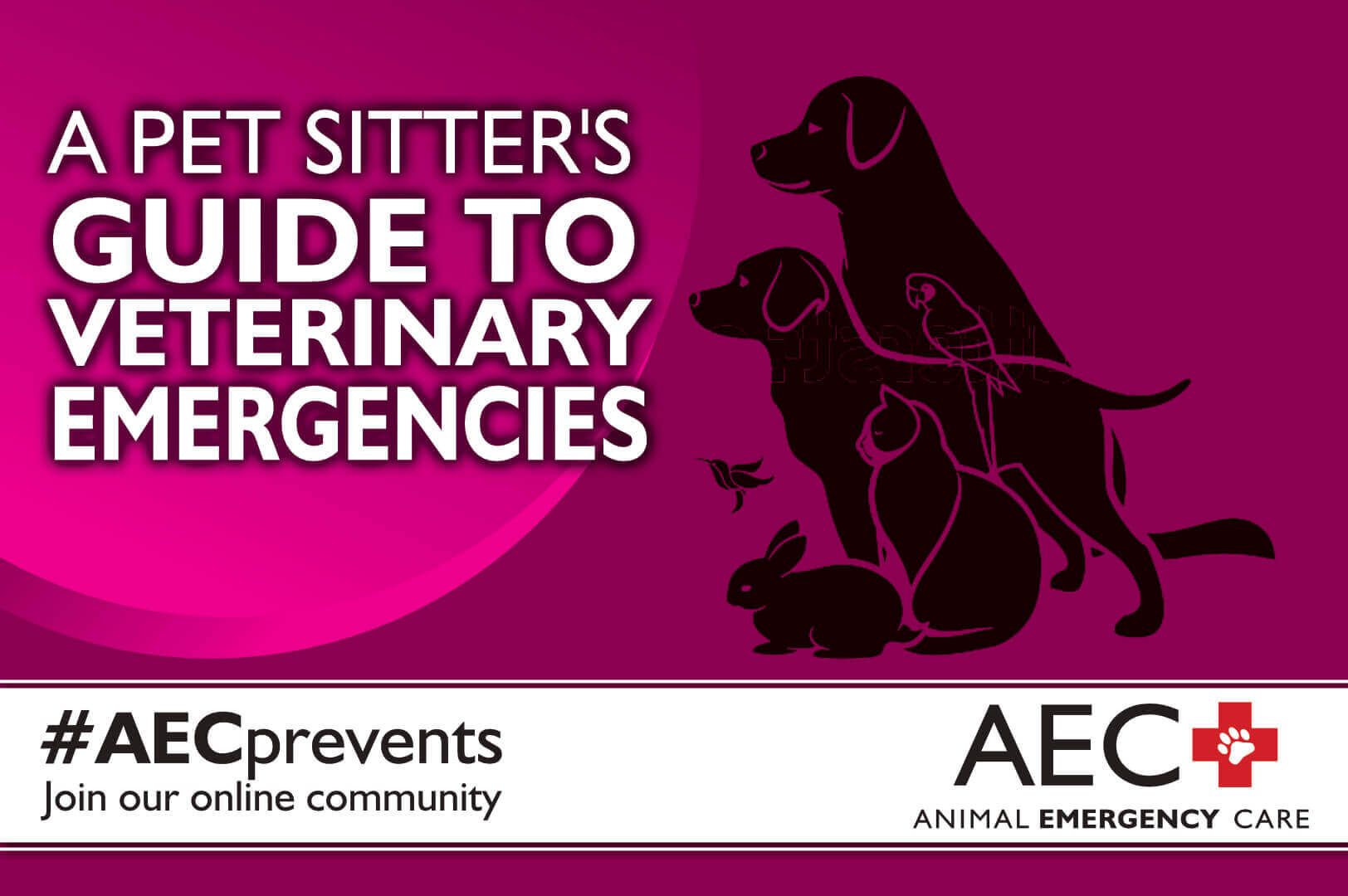Most pets will experience a veterinary emergency in their lifetime. Pet accidents or emergencies can occur at any time, and a quick response will ensure a more positive outcome. Preparation and understanding when a pet needs emergency care is critical to ensure their best chance of recovery. Pet owners bestow a huge responsibility on pet sitters when entrusting them with the care of their pet family members, and pet sitters also must always be prepared for veterinary emergencies. Our Animal Emergency Care team has compiled a pet sitter’s guide to ensure they are ready to respond if faced with a veterinary emergency.
Recognizing the emergency signs in pets
Caring for someone else’s pet can be challenging, especially if you do not know them well and are unfamiliar with their personality and habits. Learning to recognize the clinical signs of a veterinary emergency is vital and will ensure you can react quickly if your client’s pet needs immediate care. Pets who show the following clinical signs need emergency treatment:
- Difficult or labored breathing
- Decreased or absent appetite
- Sudden swelling of the abdomen or other body part
- Unusual behavior
- Vomiting, diarrhea, or constipation
- Retching
- Difficult or painful urination, especially in cats
- Excess salivation
- Trauma (i.e., hit by car, dog fight)
- Bleeding from any body part
- Fainting
- Excess coughing or sneezing
- Increased water consumption
- Lethargy or weakness
- Seizuring
- Toxin ingestion (i.e., rat poison, household chemicals, human medications, dangerous foods such as grapes)
Emergency signs are not always obvious, but you should never hesitate to take a pet for emergency veterinary care if you are concerned about their medical well-being.
Preparing for veterinary emergencies
Arm yourself with information that will ensure you are prepared for a veterinary emergency before you agree to care for someone else’s pet. Discuss how you should proceed if their pet requires emergency care. Ask them to fill out an emergency authorization form to ensure you know your client’s wishes when it comes to making medical decisions on their pet’s behalf. Additionally, be prepared with the following information and tools:
- List of pet owner contact numbers
- Credit card authorization or an agreed-upon payment method for veterinary emergency care
- Number and address of the family veterinarian and the closest veterinary emergency clinic. Remember that not all veterinary hospitals treat all species.
- Pet medications and instructions
- Copy of the pet’s medical records
- Pet’s microchip number and registration information
- Current photos of all pets under your care
- ASPCA Animal Poison Control Center number and the fee required for a call
- Location of the pet’s crate and transport equipment (i.e., leash, harness, collar)
- Pet first aid kit
Responding to a veterinary emergency
Ensure you know how to safely transport pets who are injured or showing clinical signs and need veterinary emergency care. Use tools from your pet first aid kit to stop any bleeding, stabilize the pet prior to transporting them for emergency care, and follow these steps:
- Remain calm, assess the situation, and calm the pet.
- Call ahead to the emergency veterinary clinic.
- Plan your route to the clinic before you leave.
- Minimize handling an injured pet and encourage them to lie down and stay.
- Identify the injury location or illness before you move the pet to prevent accidental bite wounds if they are painful or nervous.
- Stabilize larger pets on a firm surface such as plywood, an ironing board, or a collapsed cardboard box.
- Position an unconscious pet’s head upright, which will allow any vomitus to run out, and retain circulation to the brain.
- Cover the pet in a blanket to keep them warm.
Financial options for veterinary emergencies
It is important to discuss a financial plan with pet owners to ensure their pets receive any necessary veterinary care. Emergency care can be costly, especially if surgery or hospitalization is required. Many pet owners have pet health insurance like Trupanion to alleviate the financial stress of paying a large veterinary bill. Ask the pet owner for a copy of their pet health insurance policy for each pet under your care. Alternative payment methods that are also available include:
- Care Credit
- Scratch Pay
- Pet health savings accounts
- Short-term loans
Preventing veterinary emergencies
Pet emergencies are not always preventable. However, you can take steps to prevent a pet under your care from getting into trouble. Ensure you are familiar with all aspects of the pet’s environment which includes their favorite hiding and resting spots. Pets who are sick or injured may hide, and you need to know where to search. Never feed pets new treats, food, or medications unless directed by their owners or their veterinarian. Familiarize yourself with potential household dangers and never leave pets unsupervised in unknown environments.
Call the family veterinarian of the pet under your care, or bring them to Animal Emergency Care if they are experiencing a veterinary emergency relating to dogs or cats. Contact our friends at The Center for Bird and Exotic Animal Medicine for any exotic pet emergencies. They are the only emergency hospital in our area who regularly treat non-cat and non-dog pet species. #AECprevents
Sources:
https://www.aspca.org/pet-care/general-pet-care/emergency-care-your-pet
https://www.merckvetmanual.com/special-pet-topics/emergencies/emergency-care-for-dogs-and-cats


